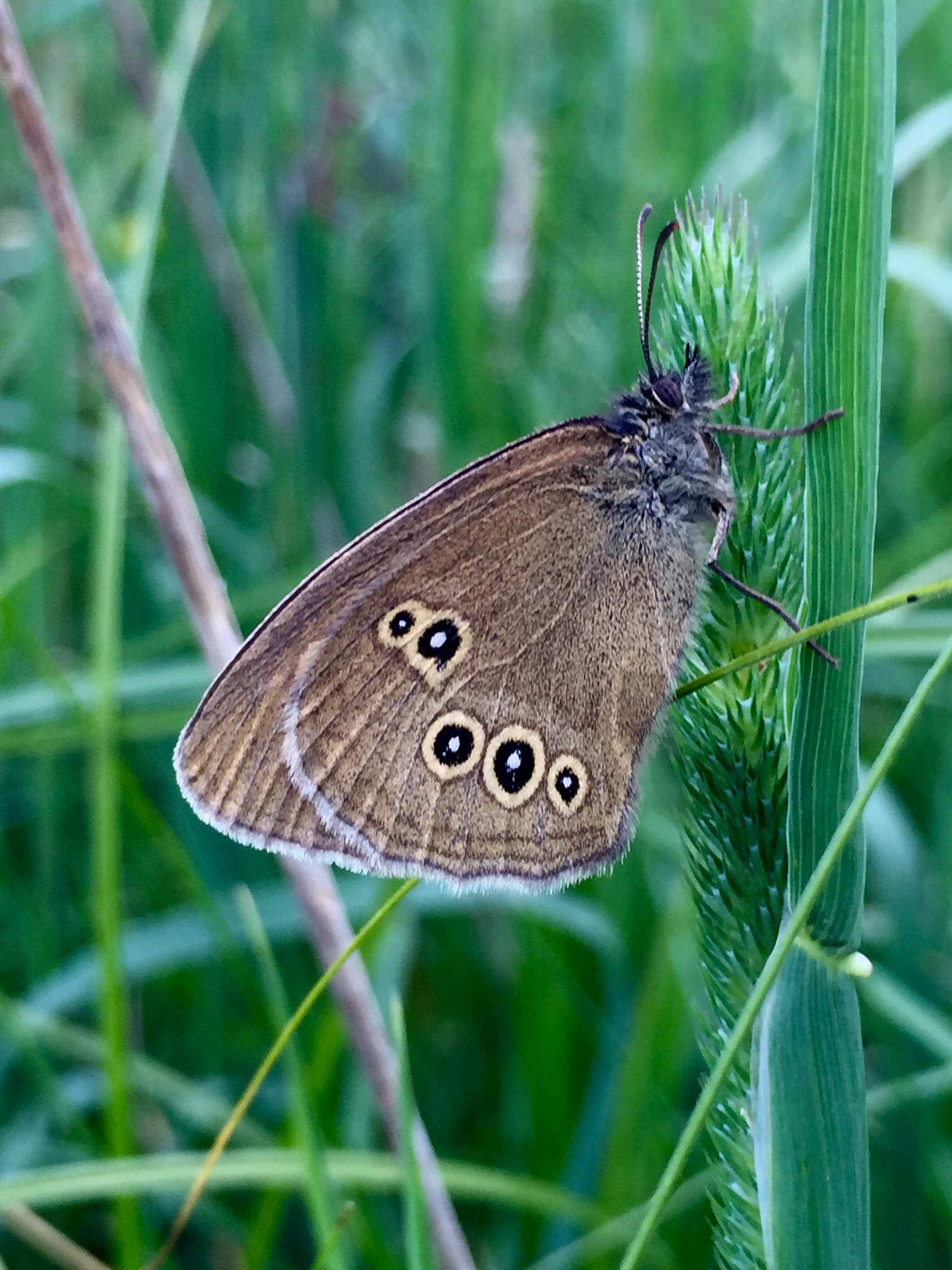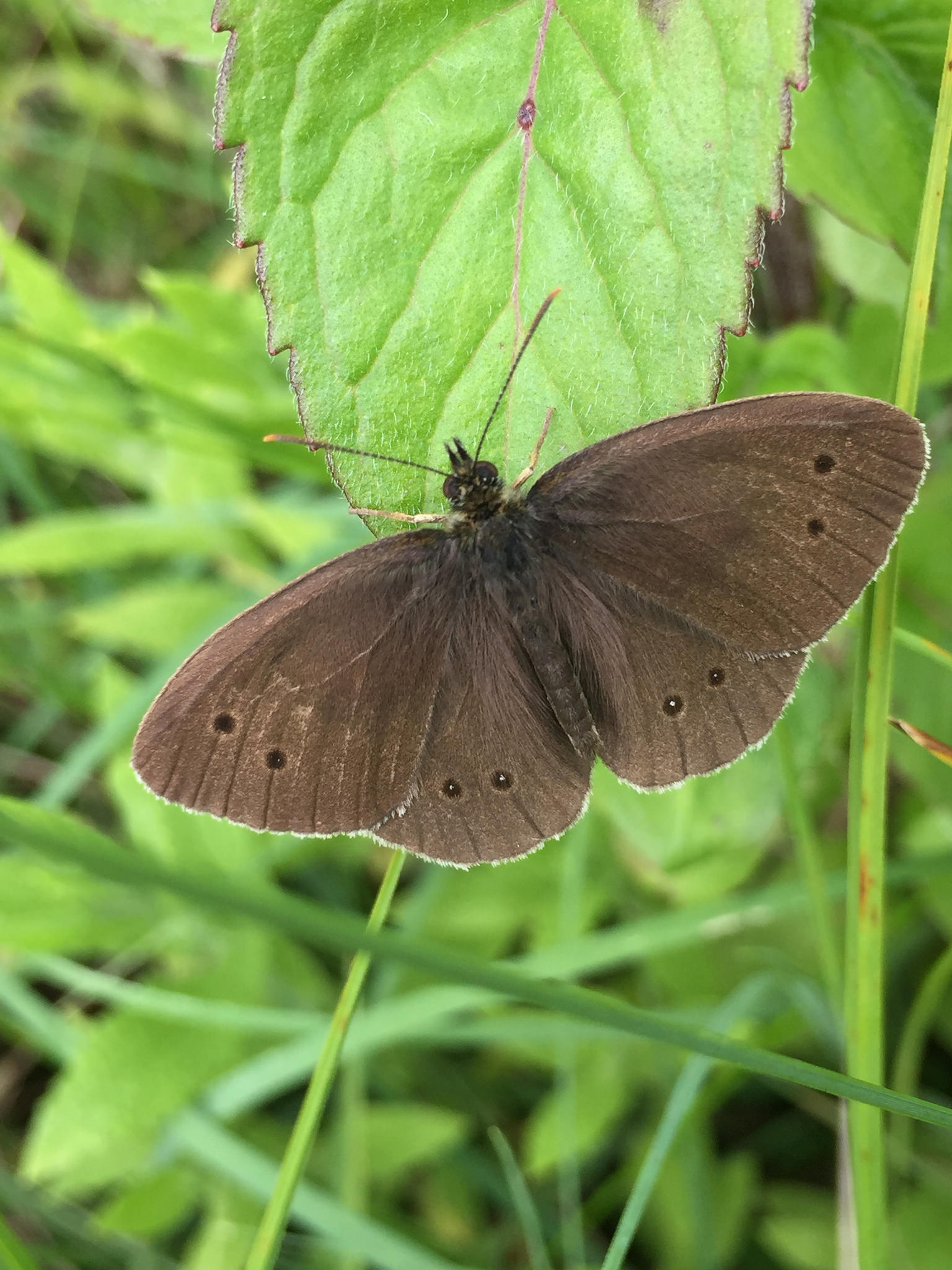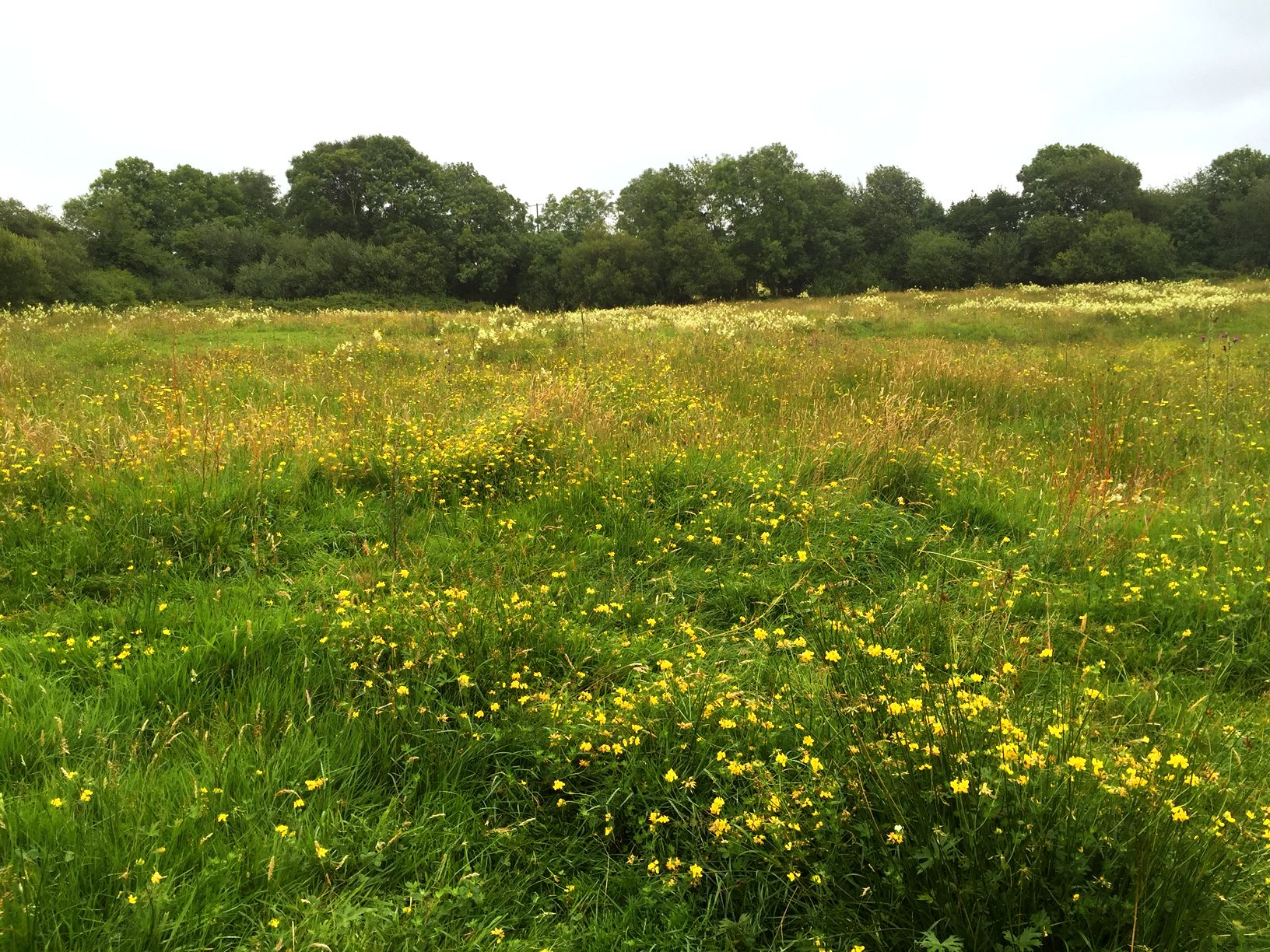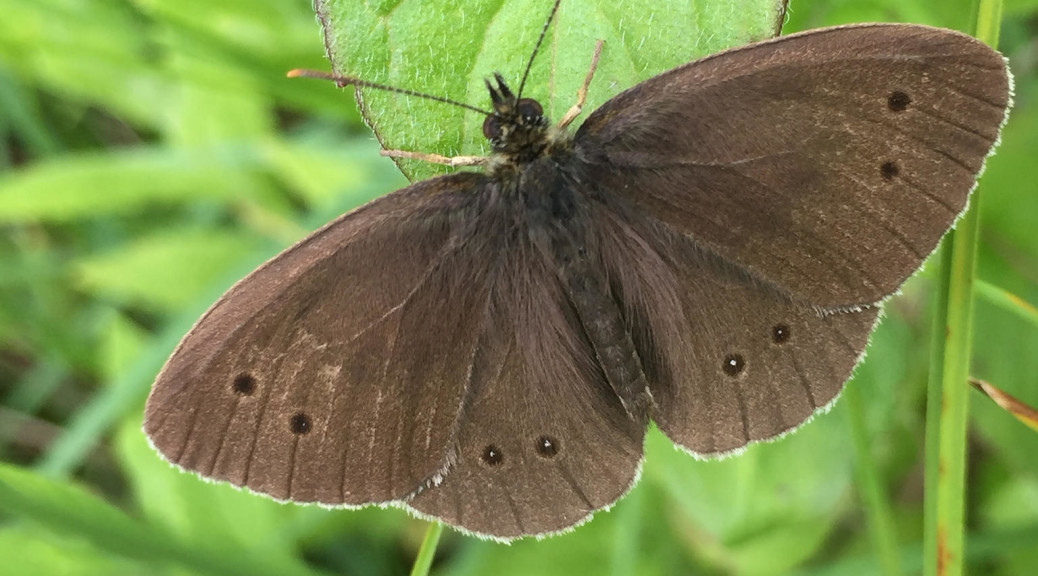
Ringlet is the other brown butterfly that is very common at this time of the year. It is an elegant butterfly, smokey brown in colour with a fine white trim to its wings. Each of the four wings are adorned with delicate ringed eyespots, from which it gets its name. It is most common in damp grassland and flies from late June to early August. Ringlet is not all that abundant around us in Bramblestown, on the well drained soils of mid Kilkenny, but on the high ground north of Paulstown, on the wet land of the Castlecomer Plateau, they must be the most common species seen in July. A walk through the fields where the grass has not yet been cut, results in three or four disturbed with each step.
Rushes dominate the grassland here. But one field in particular caught my eye where some cattle grazed amid meadowsweet, ragged robin, knapweed, self-heal and hawk’sbeards. While walking around this field trying to photograph a ringlet, I was approached by the farmer, intrigued by what I was doing. When I told him what I was at, his eyes lit up, and all he wanted to talk to me about was wildlife. A native of Bray, he bought the farm here when he retired. He is keen that his land provides a haven for wildlife, as nature is important to him. He tells me ‘it costs him money to farm’ as there is no profit in farming these days. I don’t know about the economics, but his land is teeming with wildlife and it is lovely to see his cattle grazing a species-rich grass sward. He is very grateful for the supplementary funding he receives through the agri-environment GLAS scheme, but does question the value of what he is asked to do under the scheme. He doesn’t see the merit of building nest boxes, when there are plenty of natural cavities in the trees and buildings on the farm, the placement of sand for nesting bees is a bit of a mystery to him, as his hedgerow banks are pockmarked with holes, evidence of a healthy bee population. And more recently he has been asked to fence off some land to protect it as a ‘wildlife habitat’. But, he welcomes the money, so this is what he will do.
He doesn’t see the merit of building nest boxes, when there are plenty of natural cavities in the trees and buildings on the farm, the placement of sand for nesting bees is a bit of a mystery to him, as his hedgerow banks are pockmarked with holes, evidence of a healthy bee population. And more recently he has been asked to fence off some land to protect it as a ‘wildlife habitat’. But, he welcomes the money, so this is what he will do.
This encounter highlighted to me how under the agri-environment scheme wildlife is seen as very much separate from farming, and that interventions have to be with things that are easily ‘administered’; number of nest boxes erected, number of sand banks made, length of area fenced. Wouldn’t it be an easier world if the farmer could just receive the agri-environment payment as a thank you for farming the way he does? All it would take is for the administrators to get out from behind their paperwork, and just see the results achieved by low intensity farming at first hand.
Speckled wood #1, Dingy skipper #2, Wall brown #3, Common blue #4, Holly blue #5, Small blue #6, Meadow brown #7 & Ringlet #8.


